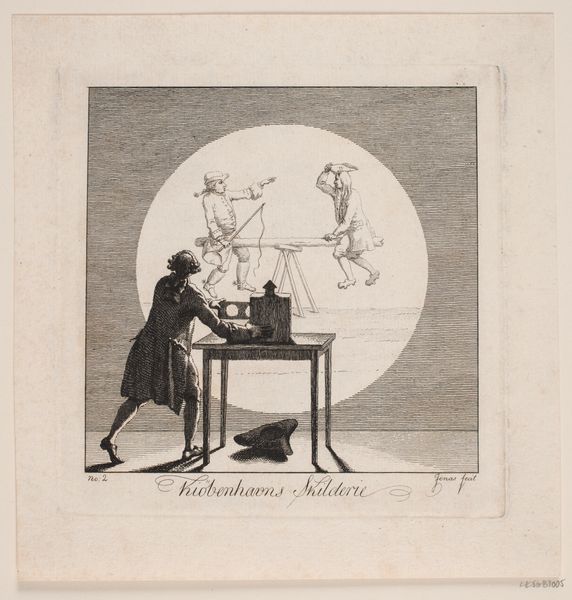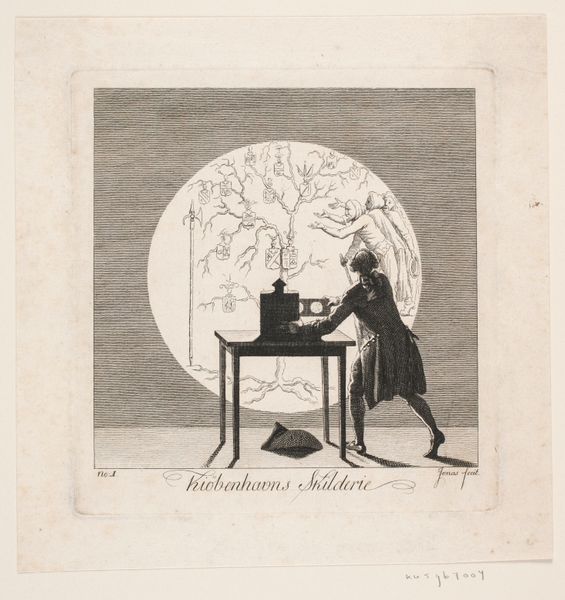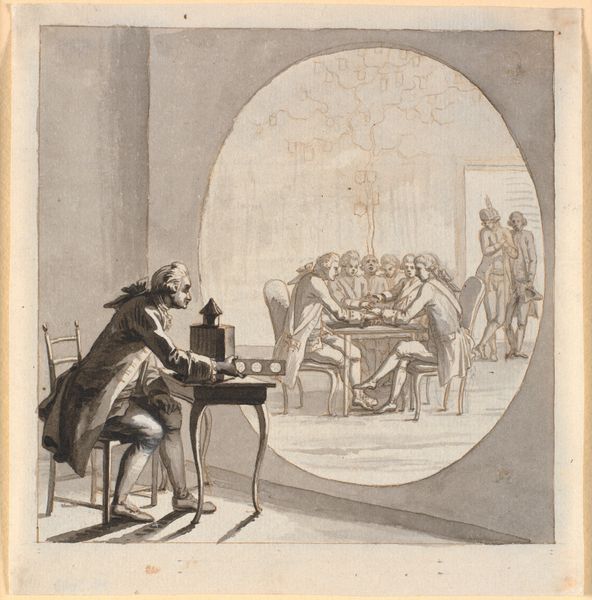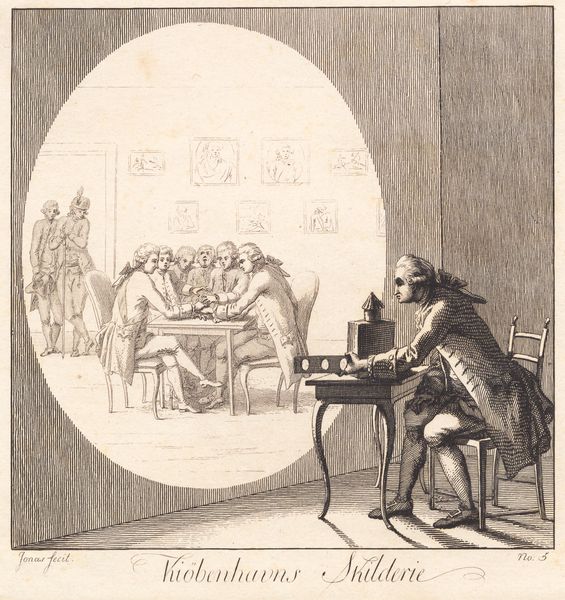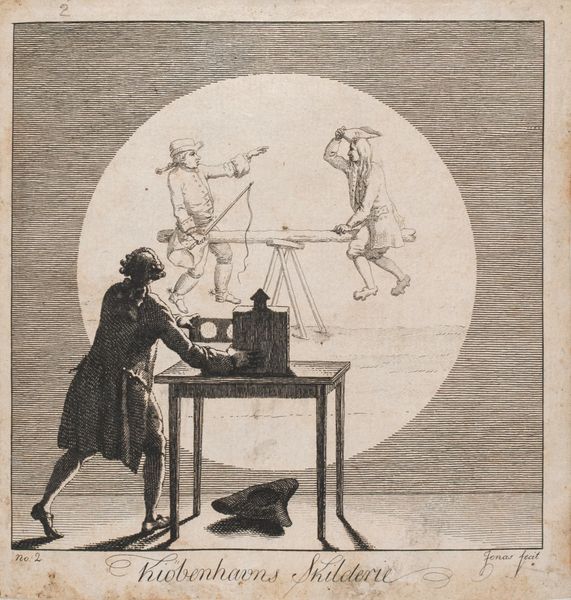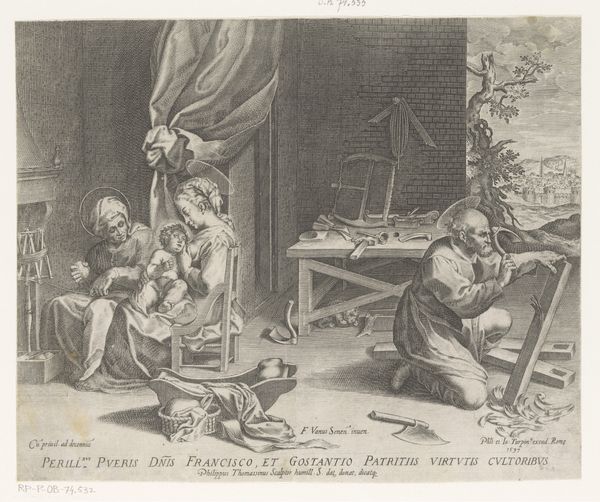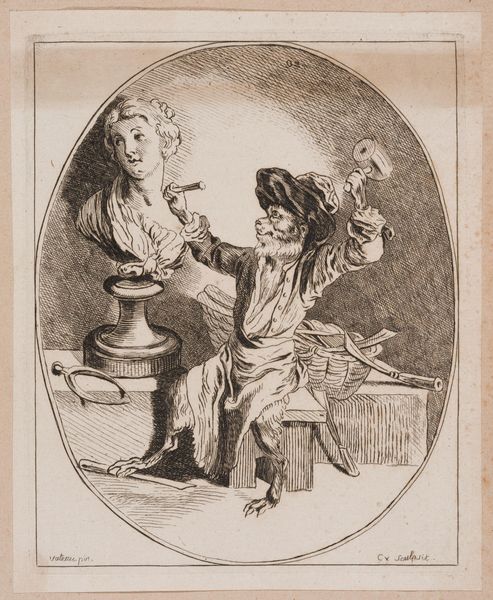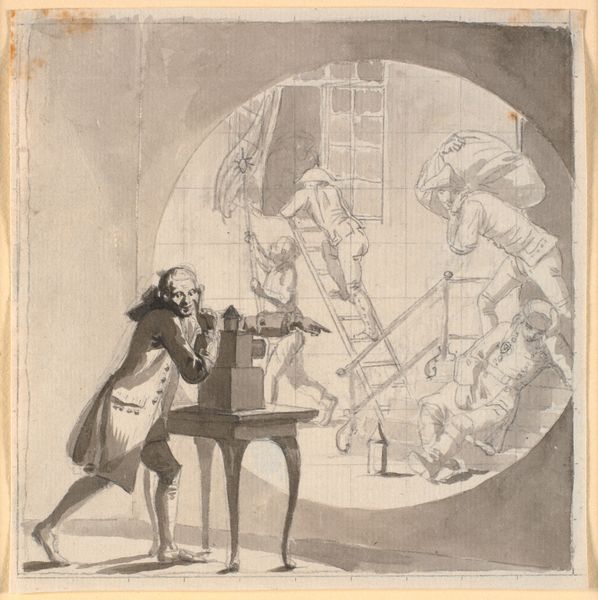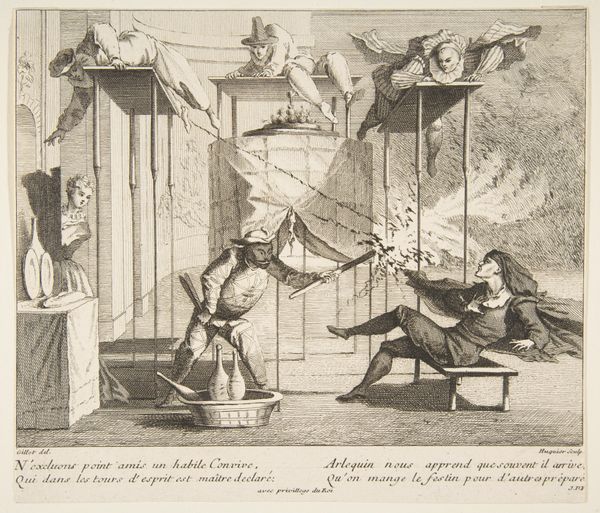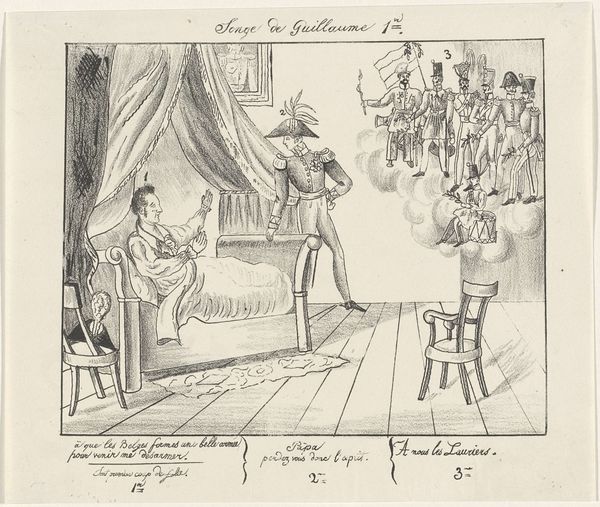
drawing, print, etching
#
portrait
#
pencil drawn
#
drawing
# print
#
etching
#
pencil sketch
#
pencil drawing
#
portrait drawing
#
genre-painting
Dimensions: 267 mm (height) x 208 mm (width) (bladmaal), 158 mm (height) x 153 mm (width) (plademaal), 135 mm (height) x 137 mm (width) (billedmaal)
Editor: This print, titled "Kiøbenhavns Skilderie" No. 3 by J.F. Clemens, created sometime between 1785 and 1788, is just fascinating! The composition, the light, feels staged, yet incredibly dynamic with figures scattered and the foregrounded man, appearing to be observing a construction on the table, what do you see in this piece from a formalist perspective? Curator: Indeed. Notice how Clemens utilizes line – predominantly thin, precise etchings – to define form and texture. The tonal range is narrow, resulting in an overall lightness. The eye is led primarily from the foreground figure, then to the activities on the staircase and is then subtly confined within the oval framing device that surrounds the scene itself. Editor: I find that oval so interesting! It almost feels like we are looking into a peepshow, viewing a private world. What about the contrast in the depicted events with foreground activity. Curator: Precisely, that framing encourages a distanced observation. But observe further: Clemens directs focus by the arrangement and size of figures within the picture plane and he positions the man's gesture within the scene – not just a subject of scrutiny, but active intervention into that which he observes and potentially constructs. The piece asks us what the nature of looking actually entails. Is it simply a moment in a theatre of representations? Editor: That's an insightful viewpoint. Now I am looking at it less as a snapshot of a staged moment and more as a carefully constructed commentary on the role of observation itself, its capacity for control and the construction of perception. Thank you for illuminating those key aspects. Curator: My pleasure, by isolating and examining its components we uncover its capacity to reflect not just scenes of a given time but the conditions of sight itself.
Comments
No comments
Be the first to comment and join the conversation on the ultimate creative platform.
